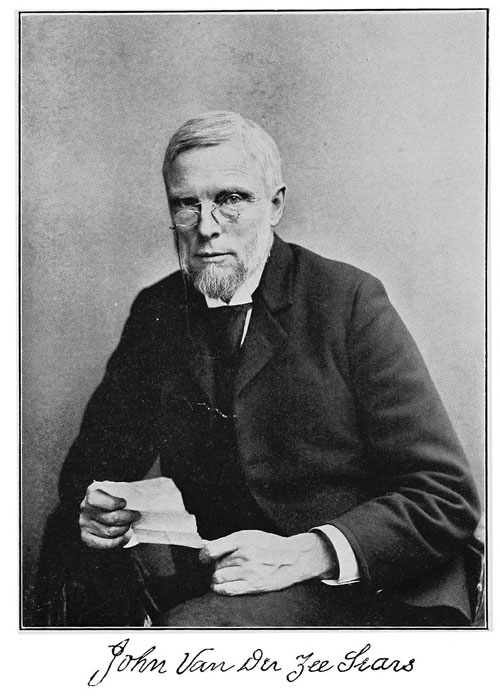
My Friends at Brook Farm
by John Van Der Zee Sears
TO MY FRIEND
JOSEPH HORNOR COATES, Esq.
OF PHILADELPHIA
Contents
| Chapter I. | THE OLD COLONIE |
| Chapter II. | FRIEND GREELEY |
| Chapter III. | A STRANGER IN A STRANGE LAND |
| Chapter IV. | A BAD BEGINNING |
| Chapter V. | A GOOD ENDING |
| Chapter VI. | ENTERTAINMENTS |
| Chapter VII. | THE SCHOOL |
| Chapter VIII. | ODDMENTS |
| Chapter IX. | FOURIER AND THE FARMERS |
| Chapter X. | UNTO THIS LAST |
ILLUSTRATIONS
| JOHN VAN DER ZEE SEARS |
| HORACE GREELEY |
| RALPH WALDO EMERSON |
| “THE HIVE” |
| CHARLES A. DANA |
| THE PAGEANT |
| A PIONEER KINDERGARTEN |
| NATANIEL HAWTHORNE |
CHAPTER I.
THE OLD COLONIE
In May, 1624, the Dutch packet New Netherlands sailed up the Hudson River tothe head of navigation, bringing a company of eighteen families under theleadership of Adrian Joris. The immigrants landed at a little trading postcalled Beaverwick kept by one Tice Oesterhout, a pioneer hunter, married to aMohawk Squaw. In a few days a party of Indians, probably Mohawks, waited on thenewcomers and politely made inquiry as to their object in entering upon Indianlands without notice or permission; Tice Oesterhout and his wife acting asinterpreters. Joris replied that they came in peace and hoped to abide in peaceon friendly terms with the Indians. He was told that he and his people would bewelcome if they joined the universal peace union of the Iroquois, and nototherwise. This proposition the settlers agreed to by acclamation. In duecourse the General Council of the Five Nations accepted the Colony as a memberof the Iroquois Federation. Joris was recognized as the Civil Chief of thelittle community, and, as he was a Walloon, his people became the WalloonNation of the Great Peace Alliance. The Great Peace was the treaty forming thebasis of the Iroquois Federation. The Colonists, instead of making a treatywith the Indians, gave their adhesion to one already made, thereby securingsafety and a practical monopoly of the fur trade on the upper Hudson. They sentannual presents to the Iroquois
